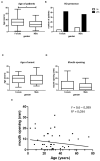Limitations of Jaw Movement in Fibrodysplasia Ossificans Progressiva: A Review
- PMID: 35391888
- PMCID: PMC8980542
- DOI: 10.3389/fmed.2022.852678
Limitations of Jaw Movement in Fibrodysplasia Ossificans Progressiva: A Review
Abstract
Fibrodysplasia ossificans progressiva (FOP) is a rare genetic disorder characterized by heterotopic ossification (HO) of the skeletal muscles, fascia, tendons and ligaments. Patients often experience limitations in jaw function due to HO formation in the maxillofacial region. However, no studies have yet analyzed the age of onset and location of HO and the type of restrictions it may yield in the maxillofacial region. The aim of this study was to evaluate all existing literature on the site of onset of HO and associated functional restrictions of the jaw. To this end, a scoping review was performed focusing on limitations of jaw movement in FOP patients. The literature search resulted in 725 articles, of which 30 articles were included for full study after applying the exclusion criteria. From these articles 94 FOP patients were evaluated for gender, age, presence and age at which HO started in the maxillofacial region, location of HO, whether HO was caused spontaneous or traumatic and maximum mouth opening. Formation of HO is slightly more common in female patients compared to male patients, but the age of HO onset or the maximum mouth opening does not differ between genders. Trauma-induced HO occurred at a significantly younger age than spontaneous HO. Interestingly, a difference in maximum mouth opening was observed between the different ossified locations in the maxillofacial region, with ossification of the masseter muscle resulting in the smallest and ossification of the zygomatic arch resulting in the largest maximum mouth opening. This review revealed that the location of the maxillofacial region affected by HO determines the degree of limitations of the maximum mouth opening. This finding may be important for establishing clinical guidelines for the dental management of FOP patients.
Keywords: dental; fibrodysplasia ossificans progressiva; jaw; maxillofacial region; maximum mouth opening; review.
Copyright © 2022 Schoenmaker, Dahou Bouchankouk, Özkan, Gilijamse, Bouvy-Berends, Netelenbos, Lobbezoo, Eekhoff and de Vries.
Conflict of interest statement
The authors declare that the research was conducted in the absence of any commercial or financial relationships that could be construed as a potential conflict of interest.
Figures





References
Publication types
LinkOut - more resources
Full Text Sources

